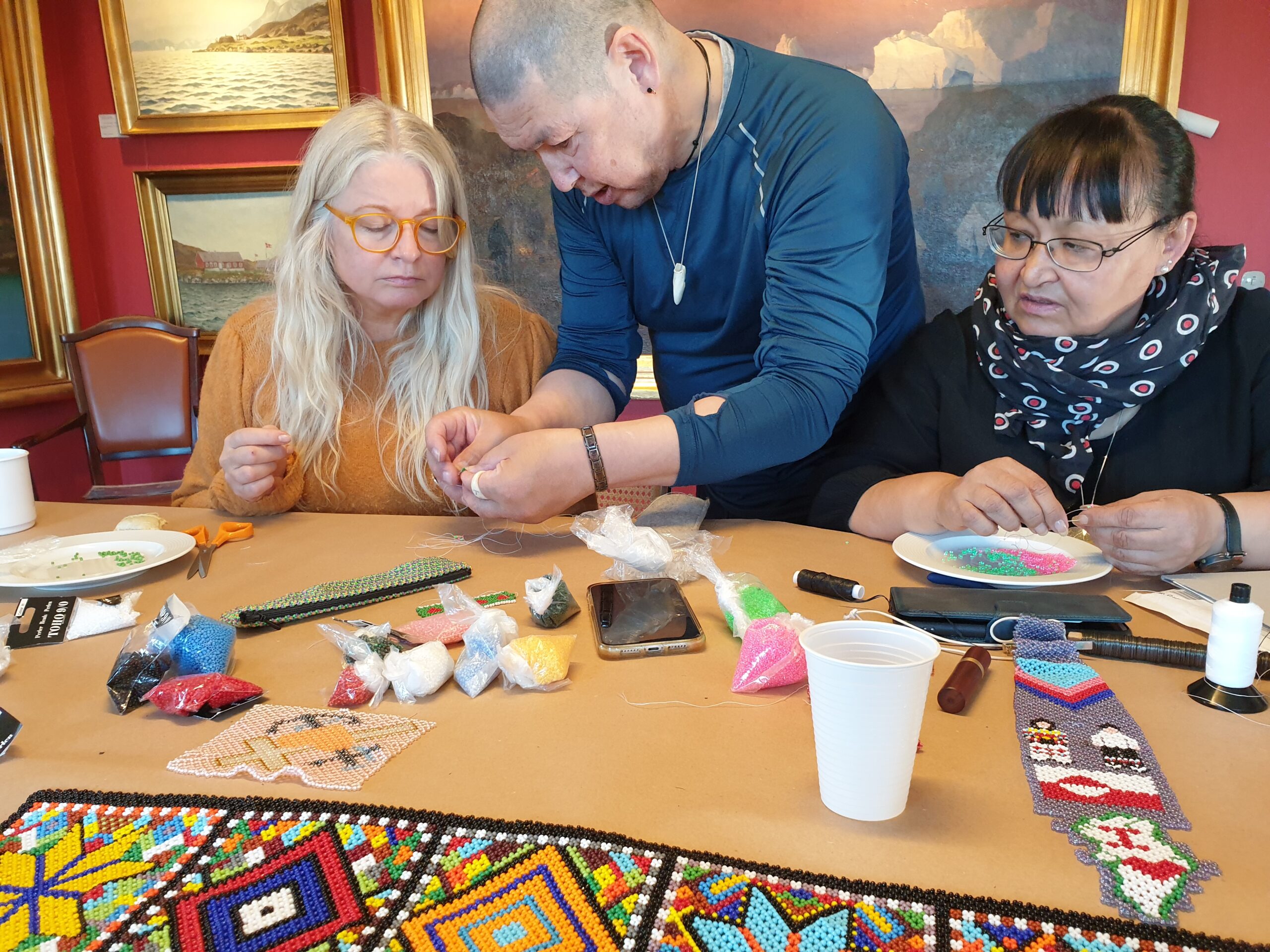
Breathing holes – an exhibition of art in crafts
Julie Bach has been on a research stay in Nuuk, where she over the course of four weeks worked in the sewing room Kittat to learn about seal skin preparation and sewing avittat.
Julie Bach was born on Rigshospitalet in 1979, but soon after the journey went to Nuuk, where the family was already living. When she was three years old, the family moved to Denmark. Surrounded by Greenlandic arts and crafts she grew up with the knowledge that her time began on the largest island in the world, and when her father died in 2014, her curiosity for the place she came from kindled.
Julie has an education from fashion design and works with sewing as an artform in her workshop in Aarhus. As a part of her project “Åndehuller” (breathing holes) she went on a research stay to Nuuk and Sisimiut, where she gained intimate knowledge about the whole process of working with seal skin.
For Julie it wasn’t just being handed seal skin, needle, and thread, but she participated in the entire process of preparing the skin, from it was delivered to Kittat, freshly flayed from the seal.
One thing Julie realised was, that the preparation of the seal skin is a physical process, in which you dig deeper and deeper under the skin of the seal. And at the same time, she felt that she dug deeper and deeper under her own skin. With the work she started to reflect on herself and her role in her family, her relation to her deceased father and her Greenlandic past.
Workshop about exchanging experiences between craft artists
Her experience from Kittat results in her art pieces, exhibited in the project “Åndehuller”, a cross-cultural exhibition, where Greenlandic and Danish artists exhibit their pieces of pearl sewing, embroidery, soft sculpture and threedimensional collage interpreting the meaning of “breathing holes”.
The other participants in the project are Najannguaq D. Lennert and Nikolaj Anguteq Kristensen from Greenland and Mette Kocmick and Marie J. Engelsvold from Denmark.
On the workshop the five artists held workshops for each other, that way sharing the knowledge and experience they have built up through the years, not just between artists, but also across cultures.
The exhibition “Åndehuller” has previously been shown in The Greenlandic House in Aarhus, and is currently being shown in Ilulissat Art Museum, until November 21.
The Project has been supported by NAPA, Great Greenland, Aarhus Kommune, Aage og Johanne Louis Hansen Fonden, Statens Kunstfond, Ellen og Knud Dalhoff Larsens Fond and Augustinus Fonden.
Other news
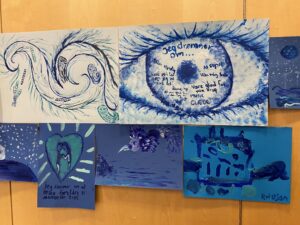
NAPA throughout Greenland
There are not enough people in Greenland who know about NAPA and the possibilities in Nordic co-operation. That is why we have chosen to use our travel budget internally in Greenland this autumn, to get to know cultural actors, both young and old, throughout Greenland.
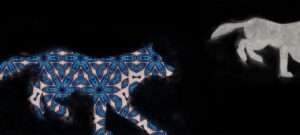
Qimusseq by Glenn Gear and AneMarie Ottosen
NAPA wishes everyone a peaceful Holiday by sharing the artwork Qimmusseq, which can function as a mental break for those experiencing it. Thank you to Glenn Gear and AneMarie Ottosen for letting us share their work both during the Suialaa Arts Festival in Nuuk and
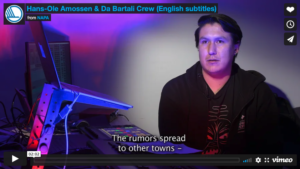
Greenlandic music from Nuuk to the Nordics to Spain to South America
The musician and sound wizard Hans-Ole Amossen is the man behind one of Greenland’s most popular concert names, Da Bartali Crew. They have toured the Nordics, Europe and South America and had a myriad of guest performing rappers and singers with them on stage. In
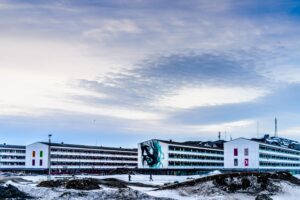
No more funds in the coffers
NAPA has distributed DKK 2.8 million over the last year, and now the entire pool has been used up. Thus, it is not possible to receive a grant if you apply for the last deadline of the year, which is 15 December. NAPA looks at



